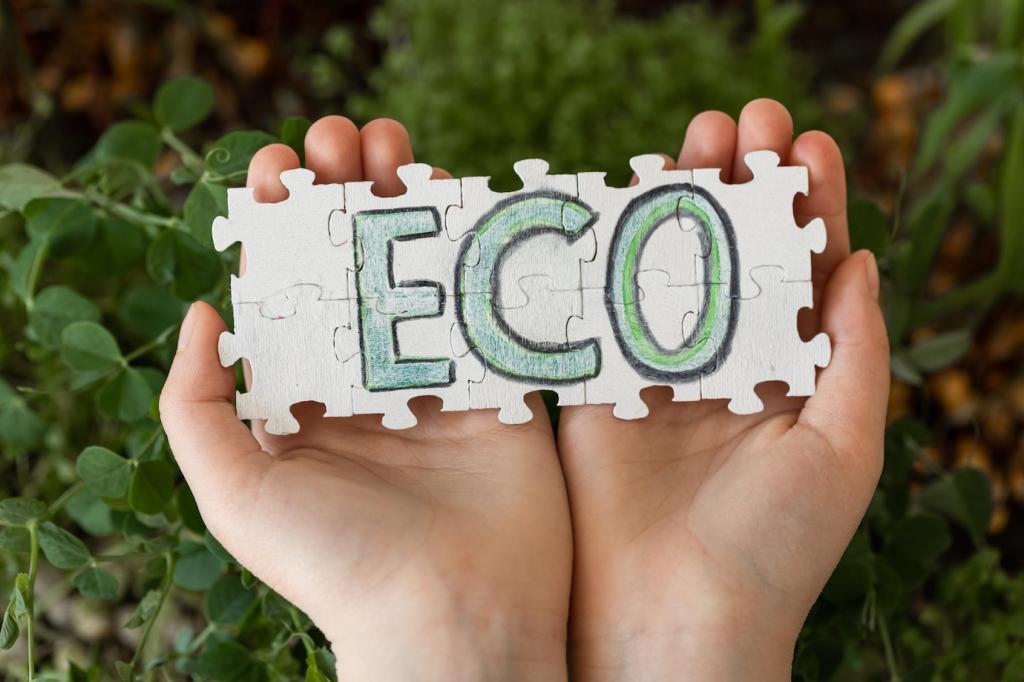Sustainable Design: Creating Versatile Spaces in Green Homes
Sustainable design redefines the possibilities within our living environments, emphasizing flexibility, conservation, and harmony with nature. Versatile spaces in green homes represent a thoughtful balance between modern comfort and environmental responsibility. Through creative spatial solutions, eco-friendly materials, and a focus on well-being, sustainable design allows homeowners to adapt and thrive while minimizing their ecological impact. This approach transforms houses into adaptable living systems that efficiently support diverse needs, promoting not only a greener planet but a more functional and enjoyable lifestyle.

Flexibility Through Multipurpose Spaces
Creating flexibility begins with spaces that easily adjust to different uses, allowing residents to maximize function without traditional limitations. A living area that transforms from a cozy lounge to a productive workspace, or a guest room that doubles as a home gym, exemplifies this adaptive approach. Sustainable design leverages built-in, movable, or modular features to enable these shifts, ensuring homeowners can efficiently utilize every inch. With smart planning and thoughtful furnishing, multipurpose spaces support diverse lifestyles while reducing the need for excessive square footage. This, in turn, minimizes resource use associated with oversized homes, highlighting how versatile design actively supports sustainability.
Eco-Friendly Materials and Innovative Construction
Selecting the right building materials is critical in green home design, as it directly impacts indoor air quality, energy efficiency, and overall resource consumption. Sustainable construction relies on materials that are renewable, recycled, or locally sourced, reducing the carbon footprint from production and transport. Innovations like rapidly renewable bamboo flooring, reclaimed wood beams, and recycled insulation contribute to healthy, durable, and low-maintenance spaces. By prioritizing quality over excess and embracing inventive materials, homeowners shape interiors that not only last longer but also support the planet. Sustainable choices at the construction phase empower versatility by ensuring structures are adaptable, simple to modify, and built to withstand changing needs.
Enhancing Indoor Environmental Quality
True sustainability includes cultivating a living environment that prioritizes occupant health and comfort. Versatile green homes often feature generous daylighting, natural ventilation, and non-toxic finishes to foster better air quality and emotional well-being. Smart placement of windows, skylights, and doors encourages cross-breezes and abundant sunlight, reducing reliance on artificial means. Indoor plants, low-VOC paints, and advanced filtration contribute to a cleaner, safer atmosphere. These strategies not only benefit residents but also ensure adaptability, allowing for seamless transitions between activities—from relaxation to focus—in a healthy space. Ultimately, enhancing indoor quality embodies the sustainable ethos of nurturing both people and the planet.
Maximizing Adaptability With Thoughtful Layouts
Open concept spaces provide a blank canvas on which to overlay diverse uses, making them integral to versatile green homes. By removing unnecessary walls and barriers, open layouts create opportunities for multifunctional living and smooth circulation. The lack of rigid divisions enables areas to transition from social gatherings to intimate moments, accommodating everything from entertainment to remote work. Smart furniture placement and subtle design cues—such as lighting or flooring changes—define zones without closing off space. This flexible environment conserves materials and opens the door for future modifications, inherently supporting sustainability by extending the home’s useful life and minimizing structural waste.

Integrating Nature and Sustainable Technology
Indoor-Outdoor Flow and Biophilic Design
Fostering a seamless connection between indoor and outdoor environments enhances well-being while expanding usable living space. Features such as large folding glass doors, patios that lead directly from living rooms, and indoor gardens blur the boundaries between house and landscape. Biophilic design elements—like green walls, natural textures, and abundant plant life—anchor spaces in nature, providing calming backdrops and improved air quality. These touches promote mental clarity and relaxation, essential qualities in multipurpose areas. This indoor-outdoor synergy adapts with the seasons, supporting both solitude and social gatherings. Ultimately, it reflects a core sustainable value: living in tune with the environment and benefiting from its restorative power.
Smart Home Technologies for Resource Efficiency
Sustainable homes increasingly rely on integrated smart technologies to optimize energy, water, and climate control. Automated systems manage lighting, heating, and cooling based on occupancy or daylight, ensuring utilities are only used when necessary. Innovative fixtures such as low-flow taps, graywater recycling, and rainwater harvesting further reduce environmental impact. These adaptable technologies learn from resident behaviors, making suggestions or automatically adjusting for maximum comfort and minimum waste. Remote access and voice controls add convenience, especially in multipurpose settings where quick transitions are key. The marriage of technology and sustainability not only shrinks the ecological footprint but empowers residents to make conscious, flexible choices daily.
Passive Solar and Renewable Energy Solutions
Harnessing natural resources to power and heat homes strengthens both sustainability and spatial adaptability. Passive solar design—using window orientation, thermal mass, and shading—naturally heats or cools interiors, reducing dependency on mechanical systems. In versatile green homes, these strategies are paired with renewable energy sources like solar panels or small wind turbines, further slashing utility bills and carbon emissions. By aligning design with the local climate and maximizing nature’s offerings, spaces remain comfortable and resilient through seasonal shifts. These energy-smart solutions support a flexible lifestyle by stabilizing operational costs, allowing homeowners to allocate resources toward evolving needs and experiences rather than basic utilities.
